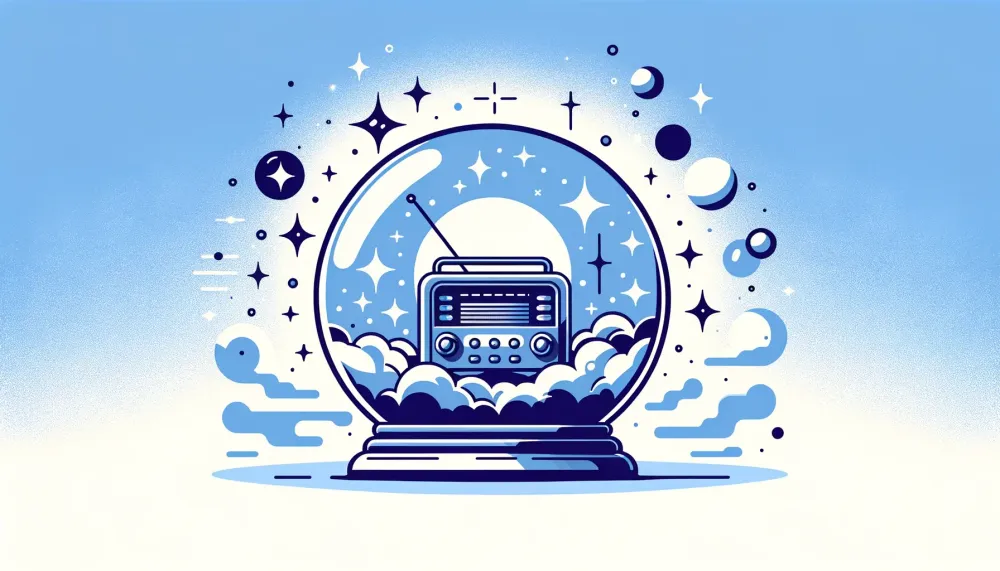Radio has come a long way...
On November 2, 1920, the world’s first commercial station, KDKA (AM) was launched. In 1933, Edwin Howard Armstrong successfully patented FM radio.
Radios began adopting FM bands from the late 50s to the 60s.
The emergence of internet radio happened in the late 90's with the advent of internet radio streaming technologies like Icecast, 1998.
With the low-cost of launching an internet radio station, there was an emergence of many independent self-run internet radio stations.
They broadcast to anyone across the globe as long as they have an internet connection.
Satellite radios also came to prominence at the turn of the 21st Century. And Norway has become the first country to shut off FM radio, in favor of digital radio.
Some feared that on-demand music streaming services, including AccuRadio, Apple Music, Spotify, and others, might shroud the radio star.
Come 2019, the radio industry is still resilient and marching forward into the future.
Today, we'll examine trends that will shape the future of radio.
Radio Future Trends
1. Podcasting keeps growing, and radios ought to take heed!
It’s time for radio stations to catch up with the podcast boom before the industry becomes too large, competitive, and difficult to venture into. Based on current statistics, the number of active podcasts is now more than 700,000, with 29 million podcast episodes, in over 100 languages.
Part of the wide appeal of podcasts is that they are on-demand. Radio, on the other hand, is live.
Radio stations need to produce original podcast series or re-purpose some of their shows into podcasts. There are many benefits to be reaped that include; drawing more listeners to their on-air content; making their content evergreen; allowing listeners to catch up with programs they missed, etc.
2. Radio on all devices
There was a time when listening to the radio was on electronic devices with FM/AM receivers. Now, radio has become ubiquitous on all devices, thanks to the internet.
You can find purely web radio stations, and simulcasts from traditional broadcasters on smartphones, gaming consoles, smart TVs, car infotainment systems, smart speakers, and more! Smartphones, in particular, are driving more podcast and internet radio listening.
3. Internet Radio and music streaming as the future of in-car listenership
DAB was set to take over car stereos when the technology emerged in the 90s and early 2000s. Compared to AM/FM, it used less bandwidth, allowing more frequencies in the same spectrum as FM. The sound quality was better.
The problem with DAB has been it’s adoption. While most smartphones come with FM chips, the first smartphone with a DAB+ chip was the LG Stylus launched in 2016. Since then, no DAB smartphones have made the headlines. DAB has even been dabbed dead on arrival.
Cars are important to radio listenership with research showing that half of the daily radio listeners only listen in their cars.
The future seems to be leaning to internet radio and music streaming services. Car manufacturers have internet-enabled infotainment systems out. And current car owners have the chance to purchase after-market car stereos.
Even the big technology companies are taking heed.
Apple’s CarPlay allows you to connect your iPhone to the car’s player using a USB. This allows you to access your apps, get directions, make phone calls, send messages, etc.
For entertainment, you can use apps like Spotify, iHeartRadio, CBS radio, Overcast, SlackerRadio and more! When streaming, you’ll be using your phone’s internet.
Apple has partnered with all the major automobile manufacturers, allowing them to support Car Play in their infotainment systems. Some of their partners include Audi, Chevrolet, Ford, GMC, Honda, Hyundai, Jeep, KIA, Toyota, Subaru, Volvo, and pretty much all the car brands you know.
Android Auto, Google's in-car system, offers similar features and more apps, including TuneIn Radio.
The biggest hindrance right now, the one thing holding back media streaming, is the cost of mobile data. But this might change; as year by year mobile data plans get cheaper.
We're also at the dawn of 5G mobile internet. It’ll be amazingly fast with up to 10 to 20 times more download speeds compared to what we have right now.
And when the cost of mobile data is no longer a pain point to the user, you can count on the rise of streaming.
Got any predictions on the future of radio?
Will we see a decline in terrestrial radio? Tell us in the comments below:
And if you need a platform to commit your radio for the future, trust CloudRadio. Based in Canada, we offer reliable online radio services for radios all over the globe with our decentralized servers in more than six locations.
Start your internet radio with us
We offer two excellent options. It’s easy to get started.
